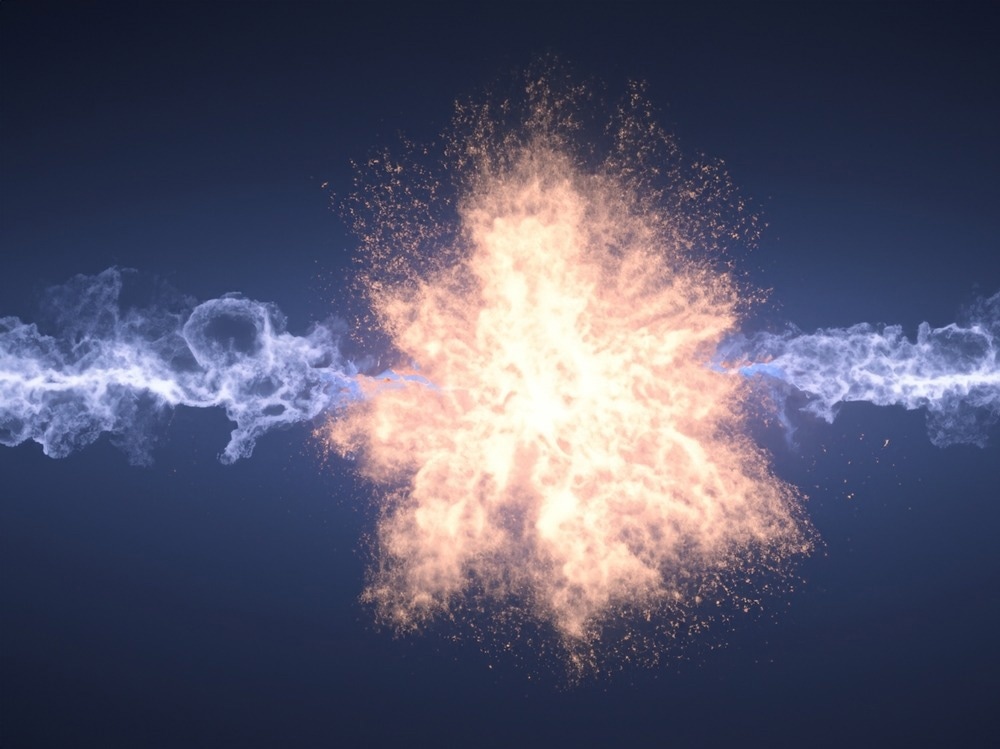Since it was first understood in the 1930s, scientists have been working to harness the power of nuclear fusion in a safe and scalable way for renewable energy generation. With an increased focus on sustainable energy as the world looks to move away from fossil fuels, the US Department of Energy has announced $42 million in funding to develop Inertial Fusion Energy Hubs across the country.

Image Credit: Here Ming/Shutterstock.com
Fusion reactions occur when two atomic nuclei combine to form a single heavier atom, releasing immense amounts of energy in the process. As the amount of energy produced by nuclear fusion is four times that of nuclear fission, scientists have long attempted to replicate the reactions that occur naturally on our sun here on Earth.
Most plans for nuclear fusion reactors include the use of deuterium and tritium, two heavy types of hydrogen. According to the International Atomic Energy Agency, just a few grams of these reactants could generate a terajoule of energy, enough to power one person’s energy consumption for approximately sixty years.
In the core of our sun, nuclear fusion occurs at temperatures in excess of ten million degrees Celsius in order for nuclei to overcome their electrical repulsion to one another and collide successfully. However, here on Earth, without the Sun’s gravitational pull to encourage fusion, scientists must generate temperatures exceeding 100 million degrees Celsius in order to fuse deuterium and tritium. There are also practical challenges associated with maintaining the pressure and the level of confinement for the plasma in order to create a net power gain. Although fusion has routinely been achieved in experiments, achieving this net power gain is the crux of the problem.
In December 2022, researchers at Lawrence Livermore National Laboratory made a huge leap in the investigation of Inertial Fusion Energy (IFE), demonstrating a net power gain in their fusion energy output. Inertial Fusion Energy is produced by Inertial Confinement Fusion, whereby fusion is achieved using lasers to target a small area containing the deuterium and tritium. The researchers have gone on to repeat a successful result three times since the initial experiment.
Following this success, the US Department of Energy announced in May 2023 a $45 million IFE fusion energy development program, followed on December 7th, 2023, by the announcement of a new $42 million program to create three hubs to further this research.
The three new hubs will be led by the University of Rochester, Colorado State University, and Lawrence Livermore National Laboratory, where the initial breakthrough occurred. Within these hubs, many more research institutions and laboratories will collaborate.
The projects occurring at these hubs will last for four years and are part of President Biden’s goal to achieve a proof-of-concept for multiple types of nuclear fusion plants in the next ten years.
With renewed funding and collaboration between over 30 institutions, the development of reliable and scalable nuclear fusion for clean and carbon-free energy could be right around the corner.
References and Further Reading
Henton, L. (2023) Texas A&M Institute part of national effort to harness nuclear laser fusion for limitless energy, Texas A&M Today. Available at: https://today.tamu.edu/2023/12/08/texas-am-institute-part-of-national-effort-to-harness-nuclear-laser-fusion-for-limitless-energy/ (Accessed: 11 December 2023).
Doe announces $42 million for inertial fusion energy hubs (no date) Energy.gov. Available at: https://www.energy.gov/articles/doe-announces-42-million-inertial-fusion-energy-hubs (Accessed: 11 December 2023).
Science, O. of (2023) Fusion Energy Sciences (FES) Hom...: U.S. doe office of science (SC), Hom... | U.S. DOE Office of Science (SC). Available at: https://science.osti.gov/fes (Accessed: 11 December 2023).
December 15, 2022 Aggies contribute to nuclear fusion breakthrough, Texas A&M University College of Arts and Science. Available at: https://artsci.tamu.edu/news/2022/12/aggies-contribute-to-nuclear-fusion-breakthrough.html?
What is fusion, and why is it so difficult to achieve? (2021) IAEA. Available at: https://www.iaea.org/bulletin/what-is-fusion-and-why-is-it-so-difficult-to-achieve (Accessed: 11 December 2023).